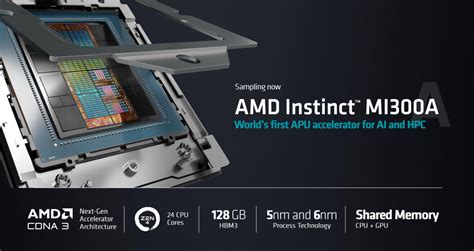AMD’s recent release of the MI300X GPU has created a buzz in the technology sector. The hardware capabilities of the GPU are impressive, boasting unparalleled memory bandwidth and potential performance gains over NVIDIA’s H100. However, as is often the case, the devil is in the details, particularly on the software side. This is where the MI300X faces its significant challenges. While AMD has made strides in hardware innovation, its software ecosystem—primarily ROCm—lags behind, impacting developer adoption and long-term viability.
The ongoing feedback from users and developers reflects a ‘chicken-and-egg’ dilemma: developers are hesitant to invest in a platform with limited adoption, but the success of the platform is, in large part, dependent on their support. This issue is compounded by the pervasive influence of NVIDIA’s CUDA, which has established itself as the go-to framework for GPU computing. CUDA’s ecosystem, stability, and extensive documentation have made it almost irreplaceable in the eyes of many developers.
Let’s dive into why software is such a crucial part of the equation. In any computing environment, especially one focused on AI and machine learning, robust software support is vital. Developers not only need tools and libraries to maximize the hardware’s potential but also require a reliable, bug-free experience to ensure productivity. Unfortunately, AMD’s ROCm has been criticized for being unreliable on non-HPC systems, creating friction and reducing its appeal to a broader developer base. For instance, while ROCm might work well on AMD’s highly configured development machines or supported clusters, it can be a nightmare for developers operating on more generic platforms.
Take the example of ML frameworks like PyTorch or TensorFlow. Both have native support for CUDA, enabling streamlined development and deployment of machine learning models across NVIDIA GPUs. AMD’s ROCm is working towards this compatibility, but the progress has been slow and hampered by inconsistencies. As one developer mentioned, ‘ROCm can be spotty, especially on consumer cards’, highlighting the need for significant investment in their software stack to make it viable for wider adoption. Imagine having robust, easy-to-use libraries and frameworks that are hardware agnostic and could compete toe-to-toe with CUDA. It’s not an entirely impossible dream, but one that requires persistent and focused effort from AMD.
There have been suggestions on how AMD could address these software shortcomings. One notable opinion suggests that AMD should distribute MI300X units to cloud providers willing to host them, thus getting the hardware into the hands of developers. This could create a flywheel effect, driving demand through tangible use cases and working software. Another angle involves collaboration. Some users dream of an Intel/AMD open-source team-up to develop a first-class SYCL stack, emphasizing open standards that could democratize GPU development and break the CUDA stranglehold.
Additionally, strategic moves like partnering with big AI players or even establishing exclusive deals could accelerate the improvement of the ROCm ecosystem. This would mirror how NVIDIA successfully embedded CUDA deeply into the AI development landscape—by providing ample hardware to researchers and developers and fostering a supportive community around it. The ultimate goal would be an environment where developers


Leave a Reply